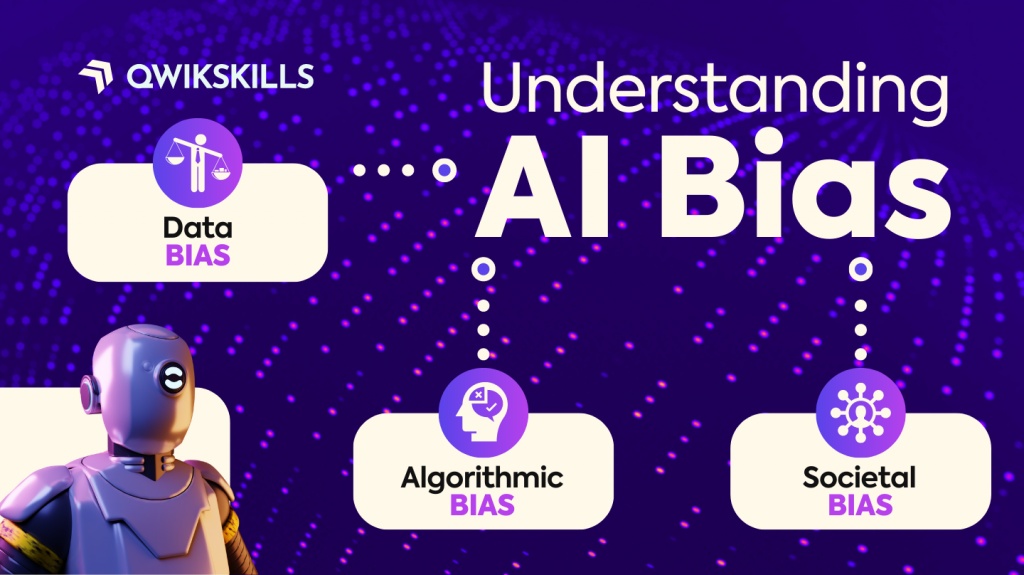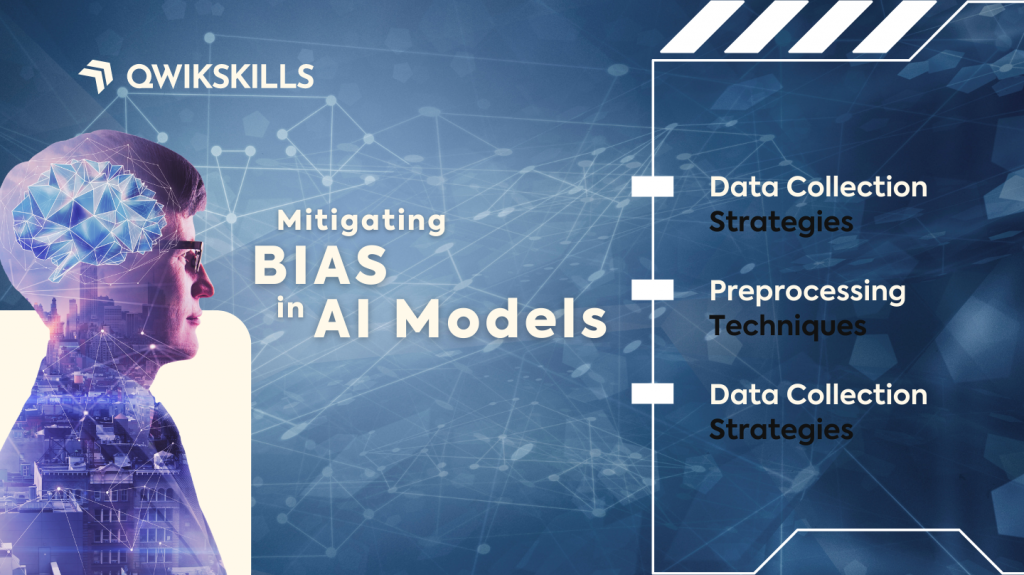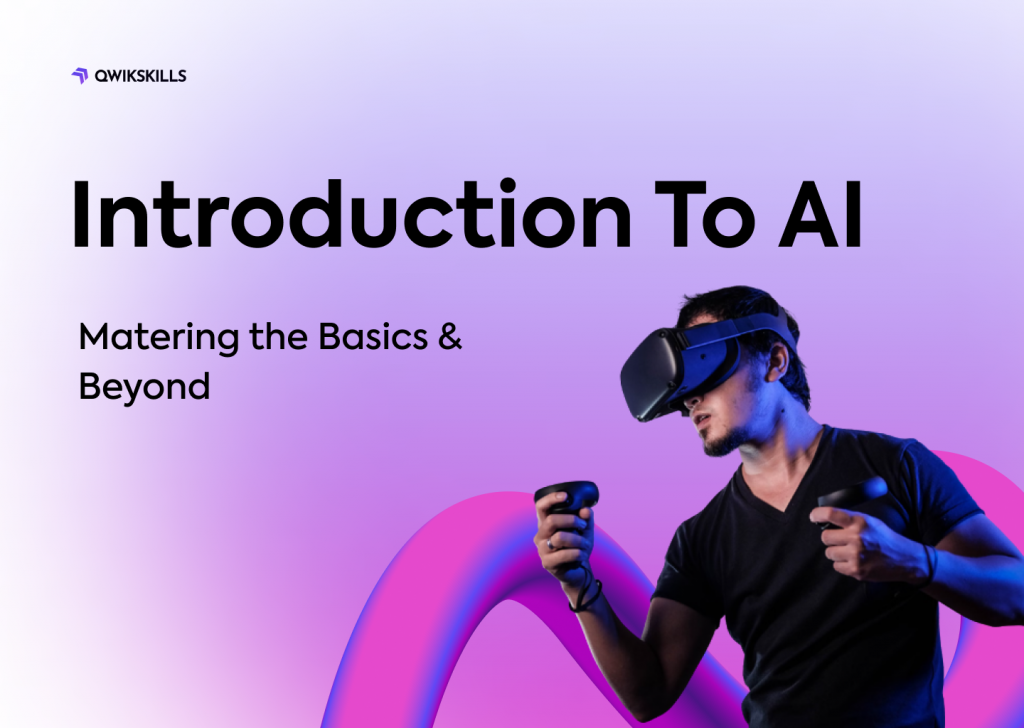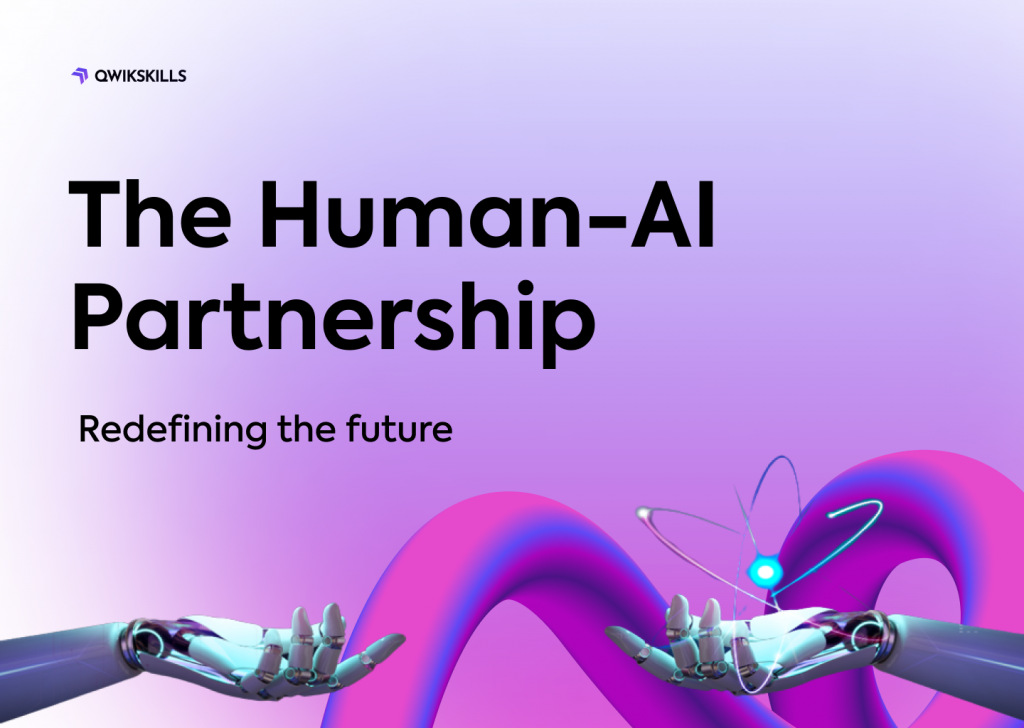Introduction
In today’s rapidly evolving technological landscape, Artificial Intelligence (AI) and Machine Learning (ML) have emerged as powerful tools with transformative potential across industries. From healthcare to finance, AI has revolutionized how we approach complex problems, streamline operations, and enhance decision-making processes. Master the basics of AI with AI Essentials 101. Learn key concepts and principles on QwikSkills. However, as AI systems become more pervasive, the need for AI Ethics considerations and bias mitigation becomes paramount.
Definition of AI and its Applications
Artificial Intelligence refers to the simulation of human intelligence in machines, enabling them to mimic cognitive functions such as learning, reasoning, and problem-solving. Its applications are wide-ranging, including natural language processing, image recognition, recommendation systems, and autonomous vehicles, to name a few. AI’s ability to analyze vast amounts of data and extract meaningful insights has revolutionized industries and empowered innovation.
Importance of AI Ethics and Bias
Ethical considerations in AI development are essential to ensure that technology serves humanity positively. As AI systems increasingly influence our lives, it’s crucial to uphold ethical standards that prioritize fairness, transparency, and accountability. Bias, both implicit and explicit, can seep into AI algorithms, leading to skewed outcomes that perpetuate societal inequalities. Addressing bias in AI is not just a technical challenge but a moral obligation to build systems that serve everyone equitably.
Understanding AI Bias
Bias in AI refers to the presence of unfair or discriminatory outcomes in algorithms due to flawed data or flawed design. There are several types of bias, including:
1. Data Bias
Data bias occurs when the training data used to build AI models is unrepresentative or contains systemic biases. This can lead to models that reflect and amplify existing inequalities.
2. Algorithmic Bias
Algorithmic bias arises from the design of the AI algorithm itself. If the algorithm is not properly designed to account for diverse inputs, it can lead to skewed predictions or decisions.
3. Societal Bias
Societal bias reflects the broader prejudices present in society that may inadvertently influence AI algorithms. These biases can reinforce harmful stereotypes and discriminatory practices.
Real-World Examples of AI Bias
AI bias is not a theoretical concern; it has manifested in various real-world instances. For instance, biased algorithms used in criminal justice systems have been shown to disproportionately impact minority communities. Similarly, facial recognition systems have demonstrated higher error rates for people with darker skin tones, highlighting inherent biases in the technology.
Impact of Biased AI on Society
The consequences of biased AI can be far-reaching. Discriminatory outcomes perpetuate inequality, reinforce social injustices, and erode trust in AI systems. Biased AI can lead to unfair hiring practices, denial of loans, or even life-altering decisions based on flawed algorithms. As AI becomes increasingly integrated into critical decision-making processes, the need to mitigate bias becomes imperative.
The AI Ethics Development
Ethical principles serve as a compass to guide AI development responsibly. Several key principles include:
1. Transparency
AI systems should be transparent in their functioning, allowing users to understand the rationale behind decisions. Transparent AI fosters trust and enables meaningful accountability.
2. Accountability
Developers and organizations must be accountable for the outcomes of their AI systems. Clear lines of responsibility ensure that harmful consequences are addressed promptly.
3. Fairness
AI systems should be designed to treat all individuals fairly, without favoring any specific group. Fairness entails identifying and rectifying biases in algorithms and data.
Balancing Innovation and Responsibility
Striking a balance between innovation and ethical responsibility is a delicate yet essential task. While rapid advancements push the boundaries of AI capabilities, it’s crucial to ensure that these advancements align with ethical considerations and societal values.
Transparency and Accountability in AI
Transparency and accountability are the cornerstones of ethical AI development. Organizations should provide clear explanations of how AI decisions are made, enabling users to assess the validity and potential biases of those decisions.
Identifying Bias in Machine Learning
Detecting bias in machine learning is a complex challenge. Bias can be elusive and deeply embedded in data and algorithms. Key challenges include:
1. Perplexity in Bias Detection
Bias detection often involves navigating intricate patterns that may not be immediately apparent. This perplexity demands sophisticated tools and techniques for accurate identification.
2. Burstiness in Bias
Bias can exhibit burstiness, where it appears intermittently in data. Detecting bursty bias requires vigilance and adaptable methods to capture and analyze these sporadic occurrences.
Tools and Techniques for Bias Detection
Advanced tools, such as specialized software and algorithms, aid in detecting bias in AI systems. Natural Language Processing (NLP) models can highlight potential biases in text data, while visualizations help reveal patterns in image recognition algorithms.
Role of Human Oversight in Bias Identification
Human oversight remains a crucial component in bias identification. While tools and techniques can automate parts of the process, human judgment and contextual understanding are indispensable for accurate bias detection.
Mitigating Bias in AI Models
To mitigate bias, proactive strategies must be employed throughout the AI development lifecycle:
1. Data Collection Strategies
Diverse and representative data collection is foundational to building unbiased AI models. Ensuring a comprehensive dataset reduces the risk of perpetuating existing biases.
2. Preprocessing Techniques
Preprocessing methods, such as data augmentation and re-sampling, can help mitigate bias in training data, creating a more balanced and unbiased foundation for model development.
3. Fairness-Aware Algorithms
Developing fairness-aware algorithms involves optimizing for equitable outcomes while considering various demographic groups. These algorithms actively counteract bias during decision-making.
AI Navigating Ethical Dilemmas
Ethical decision-making in AI is often riddled with dilemmas and trade-offs:
1. Balancing Ethics and Performance
Striking a balance between upholding ethical principles and optimizing AI performance can be challenging. Organizations must assess the trade-offs and make informed decisions.
2. Conflicting Ethics Guidelines
AI developers may face conflicting ethical guidelines, especially in cross-cultural contexts. Negotiating these conflicts requires sensitivity and a nuanced understanding of diverse perspectives.
Case Studies: AI Ethics in Decision-Making
Several case studies shed light on the complexities of ethical AI development:
1. Healthcare Diagnostics
AI-powered diagnostic systems must balance accuracy with potential biases that could lead to misdiagnoses or unequal treatment.
2. Autonomous Vehicles
Programming autonomous vehicles to make split-second ethical decisions poses ethical challenges, such as prioritizing passenger safety versus minimizing harm to pedestrians.
Regulatory Landscape and Guidelines
Regulations and guidelines are emerging to govern AI ethics:
1. Overview of AI Ethics Regulations
Governments and international bodies are devising regulations to ensure responsible AI development and mitigate potential harm.
2. Key Organizations and Initiatives
Organizations like the AI Ethics Global Center and initiatives like the Partnership on AI are spearheading efforts to establish ethical standards in AI.
3. Adapting AI Systems to Comply with Regulations
Companies must adapt their AI systems to align with evolving regulations, ensuring that ethical considerations remain at the forefront of AI development.
Building AI Ethics Systems
Creating ethical AI systems requires collaborative efforts:
1. Role of Diverse and Inclusive Teams
Diverse teams bring varied perspectives that help identify and mitigate bias effectively. Inclusive collaboration fosters well-rounded AI development.
2. Ethical Considerations in AI Workforce
AI professionals must receive ongoing training in ethical practices to embed responsible decision-making throughout the development process.
3. Creating AI Systems with Societal Values
AI development should be guided by societal values to ensure that the technology benefits all stakeholders, minimizing unintended negative consequences.

Educating AI Practitioners and Users
Education is a cornerstone of fostering AI ethics:
1. Importance of AI Ethics Education
AI practitioners must be educated about ethical considerations to create technology that aligns with societal values.
2. Training AI Professionals in Ethical Practices
Workshops, courses, and certifications equip AI professionals with the tools and knowledge needed to address bias and ethical challenges effectively.
3. Raising Awareness Among AI Users
Educating users about AI’s potential biases empowers them to engage critically with AI-generated outcomes and demand ethical accountability.
Future Directions and Challenges
The path forward presents exciting possibilities and daunting challenges:
1. Emerging Trends in AI Ethics Research
Ongoing research explores novel approaches to bias mitigation and ethical AI, encompassing interdisciplinary collaboration and advanced technologies.
2. Anticipated Challenges in Bias Mitigation
As AI systems become more complex, addressing bias in intricate algorithms and emerging technologies will be a formidable challenge.
3. Ethical Considerations for Advanced AI Applications
Advanced AI applications, such as brain-computer interfaces and sentient AI, introduce profound ethical considerations that demand careful deliberation.
FAQs
What is AI bias, and why is it a concern?
AI bias refers to the unfair or discriminatory outcomes produced by algorithms due to flawed data or design. It’s a concern because biased AI can perpetuate inequalities, reinforce biases, and lead to harmful consequences for individuals.
How can AI bias be detected and mitigated?
AI bias can be detected through advanced tools and techniques, including NLP models and visualizations. Mitigation involves diverse data collection, preprocessing, and designing fairness-aware algorithms.
What are some ethical challenges in AI development?
Ethical challenges in AI development include balancing innovation and responsibility, navigating conflicting ethical guidelines, and addressing bias while optimizing performance.
Are there regulations governing AI ethics?
Yes, there are emerging regulations and guidelines from governments and organizations to ensure responsible AI development and mitigate potential harm.
What steps can organizations take to promote ethical AI?
Organizations can promote ethical AI by fostering diverse and inclusive teams, providing ongoing training in ethical practices, and aligning AI development with societal values.
Conclusion
In the rapidly evolving realm of AI and ML, ethical considerations and bias mitigation are not optional but imperative. Building AI systems that are fair, transparent, and accountable requires collective efforts from developers, regulators, practitioners, and users. As AI continues to shape our world, a call to action echoes loudly: let us champion responsible AI development that empowers all and fosters a more equitable future.
Ready to shape the future of AI responsibly? Dive into ethical AI at QwikSkills! Gain insights from diverse experts, learn bias detection techniques, and champion innovation that’s fair, transparent, and accountable. Join us in building a better tomorrow.






